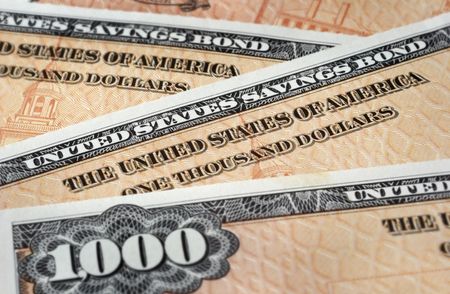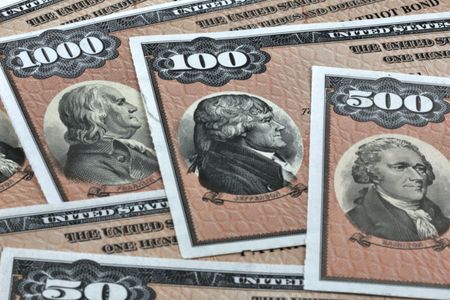Fixes for Bad Timing
If you're able to look beyond near-term trouble, you have an advantage over many professional investors.
Investing too early is one of the more common sins of value investors. Watching as that well-researched idea you loved a few months ago falls 20% to 30% can be painful and nerve-racking. Bruce Berkowitz, of the highly successful Fairholme fund, calls it "premature accumulation."
Getting your timing wrong is inevitable -- especially in today's market, in which stock prices continue to plumb new depths in a wide variety of industries. Value investors like us can be particularly susceptible to bad timing because we often buy on bad news or bet on turnarounds -- both of which have the unfortunate habit of dragging on much longer than expected, often causing share prices to continue to decline.
Three possibilities
Although the pursuit of perfect investment timing is laudable, a more realistic goal is to respond smartly when timing isn't so perfect. If a stock you bought declines, there are three options. You could throw in the towel, promising to get back in when the company's situation starts to improve. You could sit tight, comfortable that the stock remains undervalued but not enough to add to the position. Or you could buy more, in the belief that the stock is now even more undervalued.

Sign up for Kiplinger’s Free E-Newsletters
Profit and prosper with the best of expert advice on investing, taxes, retirement, personal finance and more - straight to your e-mail.
Profit and prosper with the best of expert advice - straight to your e-mail.
Your choice is one of the most difficult ones you'll make as an investor, as Richard Pzena, of Pzena Investment Management, points out: "I believe the biggest way you add value as a value investor is how you behave in those down-25% situations. We probably hold tight 40% of the time and other times split 50-50 between buying more and getting out. Making the right decisions at those moments adds more value, in my opinion, than the initial buy decision."
Each situation is unique, but if you're able to look beyond near-term trouble, you have an advantage over many professional investors. The Wall Street trading mentality and pressures on money managers to put up strong quarterly or even monthly performance numbers can make it hard for them to own obviously beaten-down stocks. Bosses may not want to hear why something looks attractive two years out if it might not go anywhere in the next six months. Investors see holdings of unpopular stocks and call managers to ask, "Don't you read the newspaper?" But it's precisely such negativity that creates bargains for investors with the patience and resilience to endure cheap stocks becoming even cheaper.
Consider Target (symbol TGT), one of the best-managed and most profitable retailers in the nation. Thanks to weakening consumer spending and highly negative investor sentiment toward any stock with exposure to the U.S. consumer, the shares have fallen steadily to the low $50s, from as high as $70 last summer. While the unfavorable economy will no doubt crimp earnings this year, Target's fundamental competitive strengths and potential to generate high returns in the future have not changed. Given that, it's an even better buy than it was last summer, but investors have fled in droves.
The stock's current weakness may actually enhance Target's long-term value because of the enormous $10-billion share-repurchase program the company has undertaken. If the stock remains at today's levels, Target will be able to repurchase more than 23% of its stock, thereby increasing earnings per share by 30% -- even if its earnings are flat. Of course, Target's earnings won't remain flat for very long. The company continues to increase its store count at a high-single-digit rate, and at a mere one-sixth Wal-Mart's size, Target has plenty of room to grow.
The compounding effect
If Target retires 23% of its stock, let's assume that earnings are flat this year and then grow 10% annually (well below historical rates) for the next two years. Earnings per share would be about $5.25 in 2010. And if Target trades at 20 times earnings (its historical ratio), you would wind up with a $105 stock, meaning a 25% annualized return from today's price.
In addition, Target has two valuable assets that provide both protection on the downside and possible catalysts on the upside. First, it owns the great majority of its real estate, which is worth an estimated $30 billion, or 70% of the company's current market capitalization. Second, it has announced that it's in discussions with JPMorgan Chase to sell a half-interest in its credit-card operations for about $4 billion. If this deal happens, Target might buy back even more shares.
More than meets the eye
A dicier investment that we believe is worth a second look is bookseller Borders Group (BGP), whose share price has cratered over the past year, down more than 70% to less than $7. Unlike Target, Borders doesn't have a great business. But managed properly, Borders has a much more valuable business than the market is giving it credit for.
Borders operates in three major segments. First, it runs more than 500 book superstores in the U.S. that generated approximately $2.8 billion in revenues last year, plus more than 500 mall-based stores, mostly under the Waldenbooks name. Finally, the company owns 20 superstores in Australia, four in New Zealand, assorted small operations in several other regions and Paperchase, a British retailer of stationery, cards and gifts.
[page break]
What are the various business lines worth? The superstores have the most value. Until recently, they were generating approximately $250 million a year of earnings before interest, taxes, depreciation and amortization (EBITDA). Subtracting $30 million for unallocated overhead to the superstores and applying to the resulting $220 million in cash flow a multiple of six, which any number of financial buyers would likely pay, this business is worth $1.3 billion.
The mall-based bookstores are a problem, as mall traffic continues to decline and the company appears unable to generate an attractive return on capital with this concept. Fortunately, the inventory can be either redeployed into Borders' superstores or returned to publishers for full credit. At a minimum, this segment should be worth its estimated $80 million in working capital.
Finally, Borders is in the process of selling its international operations, for which it hopes to receive more than $200 million. At the very least, it has the right to sell them to its largest shareholder, hedge fund Pershing Square Capital Management, at any time prior to January 15, 2009, for $135 million.
Add up the value of the businesses, subtract $550 million in debt and add $67 million that Pershing Square will pay to exercise its 9.6 million warrants with a strike price of $7, and the resulting value to Borders stockholders would be slightly more than $1 billion. That's $15 per share, based on 70 million fully diluted shares.
While a rational financial buyer would likely pay such a price, Borders is worth more to a strategic buyer, such as Barnes & Noble, which could cut costs and make great strides toward increasing Borders' productivity to Barnes & Noble's levels. All of this would justify an even higher price.
You're not alone
If you happen to be walking that fine line between being early and wrong in your own portfolio, it may be of some comfort to know that even the most successful investors are not immune to early-itis. A newsletter we co-edit, SuperInvestor Insight, tracks the activity of those who we think are the best value investors in the business, by examining the Form 13F filings detailing their holdings, which they must submit to the Securities and Exchange Commission each quarter. The table at left shows the most widely bought stocks in which four or more super investors established new positions or increased existing ones in last year's fourth quarter.
If we assume, for simplicity's sake, that these investors bought at the midpoint price between the high and low in the quarter (although their timing may have been better), a portfolio of these common buys would so far be down an average 21% to April 14. Feel any better?
Columnists Whitney Tilson and John Heins co-edit ValueInvestor Insight and SuperInvestor Insight. Mutual funds or hedge funds co-managed by Tilson own shares in Target, Borders and Barnes & Noble.
Get Kiplinger Today newsletter — free
Profit and prosper with the best of Kiplinger's advice on investing, taxes, retirement, personal finance and much more. Delivered daily. Enter your email in the box and click Sign Me Up.

-
 Estate Planning When You Have International Assets
Estate Planning When You Have International AssetsEstate planning gets tricky when you have assets and/or beneficiaries outside the U.S. To avoid costly inheritance mistakes, it pays to understand the basics.
By Kelsey M. Simasko, Esq. Published
-
 Microsoft Stock: Innovation Spurs Its 100,000% Return
Microsoft Stock: Innovation Spurs Its 100,000% ReturnMicrosoft's ability to recognize the "next big thing" has allowed sales – and its share price – to grow exponentially over the years.
By Louis Navellier Published
-
 Best Banks for High-Net-Worth Clients 2024
Best Banks for High-Net-Worth Clients 2024wealth management These banks welcome customers who keep high balances in deposit and investment accounts, showering them with fee breaks and access to financial-planning services.
By Lisa Gerstner Last updated
-
 Stock Market Holidays in 2025: NYSE, NASDAQ and Wall Street Holidays
Stock Market Holidays in 2025: NYSE, NASDAQ and Wall Street HolidaysMarkets When are the stock market holidays? Here, we look at which days the NYSE, Nasdaq and bond markets are off in 2025.
By Kyle Woodley Last updated
-
 Stock Market Trading Hours: What Time Is the Stock Market Open Today?
Stock Market Trading Hours: What Time Is the Stock Market Open Today?Markets When does the market open? While the stock market does have regular hours, trading doesn't necessarily stop when the major exchanges close.
By Michael DeSenne Last updated
-
 Bogleheads Stay the Course
Bogleheads Stay the CourseBears and market volatility don’t scare these die-hard Vanguard investors.
By Kim Clark Published
-
 The Current I-Bond Rate Until May Is Mildly Attractive. Here's Why.
The Current I-Bond Rate Until May Is Mildly Attractive. Here's Why.Investing for Income The current I-bond rate is active until November 2024 and presents an attractive value, if not as attractive as in the recent past.
By David Muhlbaum Last updated
-
 What Are I-Bonds? Inflation Made Them Popular. What Now?
What Are I-Bonds? Inflation Made Them Popular. What Now?savings bonds Inflation has made Series I savings bonds, known as I-bonds, enormously popular with risk-averse investors. So how do they work?
By Lisa Gerstner Last updated
-
 This New Sustainable ETF’s Pitch? Give Back Profits.
This New Sustainable ETF’s Pitch? Give Back Profits.investing Newday’s ETF partners with UNICEF and other groups.
By Ellen Kennedy Published
-
 As the Market Falls, New Retirees Need a Plan
As the Market Falls, New Retirees Need a Planretirement If you’re in the early stages of your retirement, you’re likely in a rough spot watching your portfolio shrink. We have some strategies to make the best of things.
By David Rodeck Published

